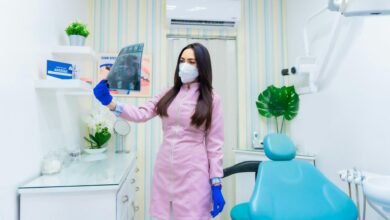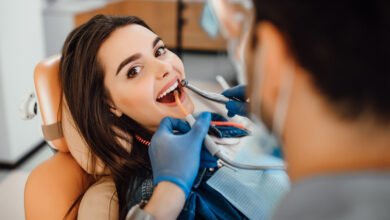PPE Guidelines: How to use PPE properly
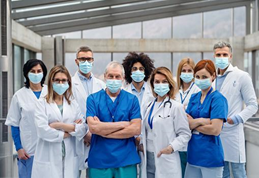
Protecting ourselves to protect others around us is of the utmost priority for health care workers. With the world waging war against the novel coronavirus, being conscious and updated about the precautions, infection control is essential not only for health workers but also for patients. PPE or Personal Protective Equipment is one such protective garment that protects if used correctly. Here’s a brief guide about PPE.
Who needs PPE?
We all need to protect ourselves from transmitting and contaminating the virus. Hence, we all might use PPE in some or the other. PPE is required when you are exposed to contact with the affected person.
- Healthcare workers are regularly exposed to the virus. hence, they must wear PPE at all times of work
- Patients confirmed or with possible symptoms of SARS-COV2.

How to select the appropriate PPE?
While we all need to protect ourselves from the virus, it is essential to understand the level of exposure you might face wearing a PPE. For example, healthcare personnel might need to wear gloves, aprons, goggles, whereas non-medical staff can suffice with a face mask.
- Anticipated Exposure: Choosing the right PPE depends on your exposure area. If you are directly in touch with the contaminated person, you should opt for a full PPE.
- Durability and appropriateness: This factor plays a significant role in the case of gown and aprons. If you are wearing a gown, the type of gown is required. Whether it should be fluid-resistant, fluid proof, neither or both?
- Fitting: Make sure your protective equipment fits you correctly. You wouldn’t want to wear a mask dangling on your neck instead of covering your nose and mouth.
Types of PPE
The various types of personal protective garment are:
- Gloves: Shields our hands from microbes and reduces the spread of microbes
- Masks: Masks protect our nose and mouth
- Eye protection: Includes face protection, goggles, face shields.
- Clothing: Includes gowns, aprons, head covering, shoe covers, etc
Gloves
A glove protects our hands from contaminated surfaces and lessens the chance of spread of the virus. Gloves must be worn if exposed to fluids and solids, mucous membranes, non-intact skin, potentially contaminated surfaces, and, most importantly, before and after sharing equipment.
Modes and practices to follow while using a glove
- The transition from clean to dirty, meaning touch the clean body or sites first before turning to dirty.
- Avoid touch contamination. This includes touching your face, glasses, or picking your nose.
- Change your gloves as and when needed. Frequent changing of your gloves will prevent the chances of the spread of the virus.
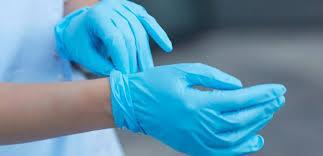
Clothing
One must consider three factors while choosing a gown or an apron.
- Know your purpose: Understanding the intention of your task can help choose between a gown and an apron. For example, aprons should be worn in case of limited contamination. Your dress should cover your entire torso, fit comfortably, and should have long sleeves.
- Material properties of the gown: Gowns are generally made of cotton or spun using a synthetic material. Cotton and synthetic gowns have different fluid resistance; another factor that plays a role in selecting PPE. If fluid penetration is likely, then a fluid-resistant gown should be worn.
- Patient risks: While wearing a gown, one must also understand the risk of exposure they’ll face. Clean gowns must be in isolation, while sterile gowns should be worn as a precaution if you are a healthcare worker.
Face Protection
Face protection is of utmost importance in the case of respiratory ailments. Masks protect our nose and mouth and prevent fluid penetration. While masks come in different shapes and sizes, designs, and fabric, not all covers provide the same protection. Hence, it is essential to understand the different types of masks and choose one that perfectly fits you.
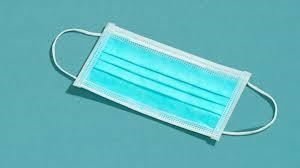
The commonly available mask is the cloth mask that provides minimal protection against the virus. One should opt for a mask that offers maximum coverage and fits you perfectly. Make sure not to share your mask as it can transmit viruses more rapidly. Wash your cover after every use.
The next mask type is the N95 Mask. An N95 mask protects you from various airborne particles and liquid from contaminating your face. This mask offers mid-range protection against the virus.
The next type of face protection is goggles. Goggles protect our eyes. One must wear a goggle that fits comfortably over and around the eye and look for anti-fog features. If you have cut yourself around the eye or face, a face shield will be a better option. Goggles with anti-fog features help with better visual clarity.
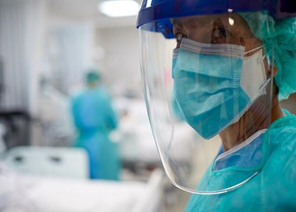
Precautions to take before donning a PPE
- Before donning your PPE, make sure you are hydrated and have used the bathroom.
- Wear a PPE in front of your colleague so they can help you and provide you a final check
- Make sure you have thoroughly washed your hands.
Sequence for donning PPE
- Wear your gown or apron
- Next comes your mask or respirator.
- Goggles or face shield for face protection
- Gloves to cover your hands
The sequence of doffing PPE
- Remove and dispose of your gloves first.
- Then, face shield or mask.
- Your gown or apron comes next
- Mask or respirator
- Perform thorough hand hygiene



